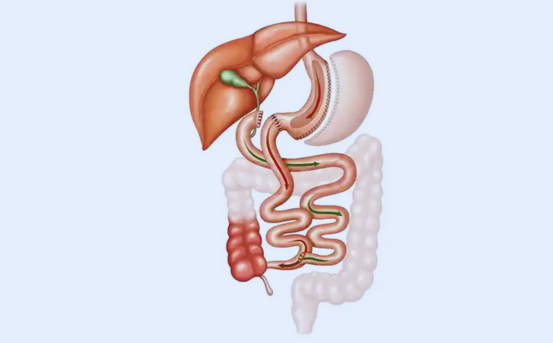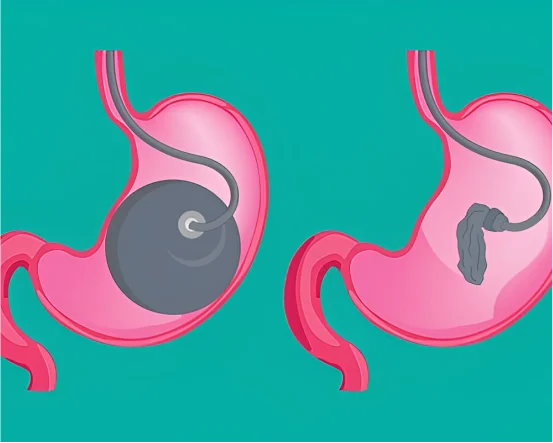Biliopancreatic Diversion with Duodenal Switch surgery is one of the most effective and complex bariatric procedures available today. Primarily performed on individuals with severe obesity (BMI over 50) or those with obesity-related comorbidities like type 2 diabetes, sleep apnea, or hypertension, this surgery helps patients achieve significant and long-lasting weight loss.
Obesity is a global epidemic, affecting millions of people and increasing the risk of chronic health conditions such as type 2 diabetes, hypertension, heart disease, sleep apnea, and certain cancers. For individuals with severe obesity (BMI ≥ 40) or those struggling to manage obesity-related health problems despite dieting, exercise, and medication, bariatric surgery has emerged as a powerful solution. Among the many surgical weight loss options available today, Biliopancreatic Diversion with Duodenal Switch (BPD/DS) stands out as one of the most effective—yet complex—procedures.
What Is Biliopancreatic Diversion with Duodenal Switch (BPD/DS) Surgery?
BPD/DS is a two-part weight loss surgery that reduces the size of the stomach and reroutes the small intestine to limit food absorption. The two key components are:
-
Sleeve Gastrectomy :- Around 70-80% of the stomach is removed, leaving a narrow tube or sleeve.
-
Intestinal Bypass :- The small intestine is rearranged to reduce the absorption of calories, fats, and nutrients.
What sets BPD/DS apart from other bariatric surgeries is that it offers both restrictive and malabsorptive weight loss mechanisms limiting how much food you eat and how many calories and nutrients your body absorbs.
Why Is BPD/DS Considered Effective?
BPD/DS has shown remarkable success in :-
-
Producing significant and sustained weight loss (up to 70-80% of excess weight)
-
Improving or resolving type 2 diabetes
-
Lowering cholesterol and triglyceride levels
-
Managing hypertension
-
Treating metabolic syndrome
However, due to its complexity and potential for nutritional deficiencies, it is typically recommended for patients who need aggressive treatment for morbid obesity.
Types of Biliopancreatic Diversion with Duodenal Switch Surgery
There are two primary types of BPD/DS surgery :-
Traditional Biliopancreatic Diversion (BPD)
This is the original form of the surgery and involves :-
-
Removing a large portion of the stomach (but not preserving the pyloric valve)
-
Creating a direct connection between the stomach and the distal part of the small intestine
Key Features :-
-
High degree of malabsorption
-
No pyloric valve (the valve that controls stomach emptying)
-
Less commonly used today due to higher risks of dumping syndrome and nutritional complications
Pros :-
-
Extremely effective weight loss
-
Significant improvement in obesity-related diseases
Cons :-
-
Higher risk of nutritional deficiencies (vitamins A, D, E, K, calcium, protein)
-
Potential for frequent diarrhea or loose stools
-
Not widely performed today
Biliopancreatic Diversion with Duodenal Switch (BPD/DS)
This is the modern and more refined version of the traditional BPD. It includes :-
-
A sleeve gastrectomy that preserves the pyloric valve
-
Bypassing a significant portion of the small intestine
-
Dividing the duodenum and attaching it to the lower part of the small intestine (ileum)
Key Features :-
-
Maintains the pyloric valve (reducing the risk of dumping syndrome)
-
Balances effective weight loss with better nutritional absorption
-
Most commonly performed version of BPD
Pros :-
-
Sustained and significant weight loss
-
Improved nutrient regulation due to preserved pyloric valve
-
Better long-term outcomes in metabolic disease management
Cons :-
-
Complex and technically demanding
-
Lifelong need for nutritional supplements
-
May require more frequent follow-up and monitoring
Modified Types of biliopancreatic diversion with duodenal switch surgery
Several modified or alternative versions of BPD/DS exist to improve patient outcomes and reduce complications. These include :-
Single Anastomosis Duodenal Switch (SADI-S)
Also called the Loop DS, this is a simplified version of the traditional BPD/DS.
How it works :-
-
Involves a sleeve gastrectomy
-
Only one intestinal connection (anastomosis) is made between the duodenum and ileum
Pros :-
-
Fewer surgical complications due to one anastomosis
-
Effective weight loss and diabetes control
-
Reduced operating time and recovery period
Cons :-
-
Slightly less long-term data than traditional biliopancreatic diversion with duodenal switch surgery
-
Risk of nutritional deficiency still present
SADI-S is gaining popularity for its simplicity and similar benefits with potentially fewer complications.
Choosing the right type of biliopancreatic diversion with duodenal switch surgery
Selecting the appropriate type of BPD/DS surgery depends on several factors :-
-
BMI and weight loss goals
-
Presence of metabolic disorders
-
Patient’s age and overall health
-
Surgeon’s experience and preference
-
Long-term commitment to lifestyle changes and supplements
A detailed consultation with a bariatric surgeon and nutritionist is critical to determine the best procedure for your health profile and goals.
Benefits of biliopancreatic diversion with duodenal switch surgery
Regardless of the type, BPD/DS surgery offers multiple health benefits :-
-
Dramatic Weight Loss :- Most patients lose 70–80% of their excess weight within 2 years.
-
Diabetes Remission :- Over 90% of patients with type 2 diabetes show major improvement or remission.
-
Improved Cardiovascular Health :- Decreases in blood pressure, cholesterol, and triglyceride levels.
-
Enhanced Quality of Life :- Reduction in joint pain, sleep apnea, and depression.
-
Durability :- Long-term studies show sustained weight loss even 10–15 years after surgery.
Risks and Considerations
As with all surgeries, BPD/DS has potential risks :-
-
Nutritional Deficiencies :- Particularly in fat-soluble vitamins (A, D, E, K), calcium, and protein.
-
Dumping Syndrome :- Less likely with modern DS due to preserved pyloric valve.
-
Bowel Changes :- May include more frequent, loose stools or gas.
-
Surgical Risks :- Infection, bleeding, hernia, or leakage from intestinal connections.
Patients need lifelong medical follow-up, strict dietary adherence, and routine blood work to monitor and manage vitamin and mineral levels.
Post-Surgery Lifestyle and Care
Success with BPD/DS surgery depends heavily on post-operative care :-
-
Daily Nutritional Supplements :- Multivitamins, calcium, iron, and fat-soluble vitamins.
-
High-Protein Diet :- Ensures adequate muscle retention and tissue repair.
-
Regular Exercise :- Crucial for maintaining weight loss and improving overall fitness.
-
Routine Monitoring :- Frequent medical check-ups and lab tests are essential.
Following medical advice diligently ensures long-term safety and effectiveness of the surgery.
Conclusion
Biliopancreatic Diversion with Duodenal Switch (BPD/DS) surgery is a powerful tool in the fight against severe obesity and metabolic diseases. Whether you choose the traditional version, modern BPD/DS, or a simplified option like SADI-S, each type offers significant weight loss potential and improvement in overall health.























